Raw pistachio nuts have gained popularity among health-conscious consumers due to their unique taste, nutritional benefits, and versatility. These small green nuts are native to the Middle East but are now cultivated in various parts of the world. They are not only delicious but also offer a range of health benefits. In this article, we’ll explore the key features, nutritional profile, health benefits, and various ways to incorporate raw pistachio nuts into your diet. Features and Varieties: Raw pistachio nuts are known for their distinctive earthy flavor, crispy texture, and vibrant green color. These nuts are encased in a hard, beige shell that splits open when ripe, revealing the edible kernel inside. Pistachios harvested with their shells intact are referred to as “in-shell pistachios,” while those with their shells removed are called “shelled” or “de-shelled” pistachios. There are several varieties of pistachios available in the market, each with unique characteristics. Some of the popular ones include Kerman, Akbari, Ahmad Aghaee, and Fandoghi. Kerman pistachios are often regarded as the premium variety due to their larger size, superior taste, and high shell-opening percentage. Nutritional Profile: Raw pistachio nuts boast a rich nutritional profile. They are packed with essential nutrients, vitamins, minerals, and healthy fats, making them a nutrient-dense snack option. Here’s a breakdown of the key nutrients found in one ounce (approximately 28 grams) of raw pistachio nuts: – Calories: 159 – Protein: 5.7 grams – Healthy Fats: 12.8 grams – Carbohydrates: 7.7 grams – Fiber: 3 grams – Vitamin B6: 0.3 milligrams – Thiamine (Vitamin B1): 0.2 milligrams – Magnesium: 34 milligrams – Potassium: 291 milligrams – Phosphorus: 139 milligrams Health Benefits: 1. Heart Health: Raw pistachio nuts are a heart-healthy snack option due to their high content of monounsaturated fats. These healthy fats help lower bad cholesterol (LDL) levels while increasing good cholesterol (HDL) levels, reducing the risk of heart disease. 2. Weight Management: Despite being calorie-dense, raw pistachio nuts have a low energy density, which means they provide a feeling of fullness without significantly increasing caloric intake. The fiber and protein in pistachios help control appetite, making them a suitable addition to weight management diets. 3. Blood Sugar Control: Pistachios have a low glycemic index, meaning they cause a gradual and steady rise in blood sugar levels. This characteristic, combined with their high protein and fiber content, makes pistachio nuts a suitable snack for individuals with diabetes or those aiming to manage blood sugar levels. 4. Antioxidant-Rich: Raw pistachio nuts are a good source of antioxidants such as lutein, beta-carotene, and gamma-tocopherol. These antioxidants help combat oxidative stress, which can contribute to chronic diseases such as cancer, heart disease, and age-related macular degeneration.
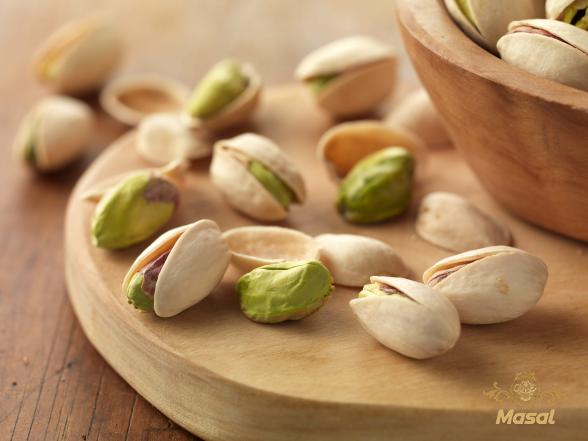
nut
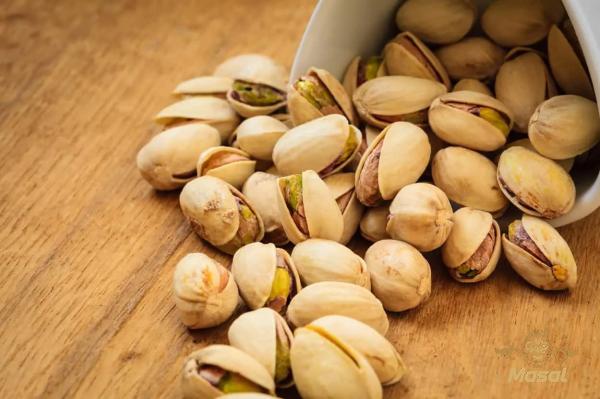 5. Eye Health: The antioxidants found in pistachios, coupled with their high content of lutein and zeaxanthin, contribute to better eye health. These compounds are known to reduce the risk of age-related macular degeneration and cataract development. Incorporating Raw Pistachio Nuts into Your Diet: There are numerous ways to incorporate raw pistachio nuts into your daily diet, allowing you to enjoy their unique flavor and reap their health benefits. Here are a few ideas: 1. Snack on Them: Enjoy a handful of raw pistachio nuts as a standalone snack. They are an excellent alternative to less nutritious snacks like chips or candies. 2. Culinary Applications: Add raw pistachio nuts to a variety of dishes to enhance flavor and texture. They can be used in salads, sauces, marinades, baked goods, and even as a topping for ice cream or yogurt. 3. Trail Mixes: Create your own custom trail mix by combining raw pistachio nuts with other nuts, dried fruits, and even dark chocolate for a healthy and satisfying snack option on the go. 4. Smoothies and Shakes: Incorporate raw pistachio nuts into smoothies or shakes for added creaminess and nutrition. They pair well with flavors like banana, vanilla, or chocolate. 5. Nut Butter: Grind raw pistachio nuts in a food processor to make your own pistachio nut butter. Enjoy it as a spread on bread or as a dip for fruits and vegetables. Conclusion: Raw pistachio nuts, with their distinct flavor and numerous health benefits, are a versatile and nutritious addition to any diet. Loaded with essential nutrients, healthy fats, fiber, and antioxidants, they provide a satisfying snack option while contributing to heart health, weight management, blood sugar control, and eye health. Incorporate these vibrant green nuts into your meals, snacks, and desserts to enjoy their unique taste and reap the many benefits they offer.1. Overview of the Pistachio Market: The global pistachio market has experienced significant growth in recent years, driven by increasing consumer awareness regarding the health benefits of nuts and the growing demand for plant-based protein sources. According to a report by Grand View Research, the global pistachio market size is expected to reach USD 7.24 billion by 2025, with a compound annual growth rate (CAGR) of 9.5% from 2018 to 2025. The market is characterized by the high demand for raw, shelled pistachio nuts, both for direct consumption and as an ingredient in various food products. 2. Key Players in the Pistachio Industry: The pistachio industry is dominated by several key players that contribute to its growth and development. These include both growers and processors who play a crucial role in meeting the increasing demand for raw pistachio nuts. Some of the prominent industry players include: – Wonderful Pistachios & Almonds: A California-based company known for its flagship brand, Wonderful Pistachios. They have a wide range of pistachio products and a strong distribution network, making them one of the leading players in the market. – The Pistachio Company: A family-owned Australian business specializing in growing, processing, and distributing premium quality pistachio nuts. They focus on sustainable farming practices and have a diverse product portfolio. – Germack Pistachio Company: Based in Detroit, Michigan, Germack Pistachio Company is known for its high-quality roasted and flavored pistachio products. They have been in operation for over 90 years and prioritize sourcing fresh pistachios directly from growers. – Setton Farms: One of the largest pistachio processors and suppliers in the United States, Setton Farms is known for their state-of-the-art processing facilities and sustainable practices. They have a wide range of pistachio products and are committed to quality throughout the supply chain. 3. Growing Consumer Demand for Healthy Snacks: The increasing prevalence of health-conscious consumers and the demand for healthy snacking alternatives have significantly contributed to the growth of the pistachio market. Consumers are looking for nutritious and satisfying snack options that align with their dietary preferences and provide health benefits. Raw pistachio nuts, with their rich nutrient profile, including protein, healthy fats, vitamins, and minerals, meet these demands.
5. Eye Health: The antioxidants found in pistachios, coupled with their high content of lutein and zeaxanthin, contribute to better eye health. These compounds are known to reduce the risk of age-related macular degeneration and cataract development. Incorporating Raw Pistachio Nuts into Your Diet: There are numerous ways to incorporate raw pistachio nuts into your daily diet, allowing you to enjoy their unique flavor and reap their health benefits. Here are a few ideas: 1. Snack on Them: Enjoy a handful of raw pistachio nuts as a standalone snack. They are an excellent alternative to less nutritious snacks like chips or candies. 2. Culinary Applications: Add raw pistachio nuts to a variety of dishes to enhance flavor and texture. They can be used in salads, sauces, marinades, baked goods, and even as a topping for ice cream or yogurt. 3. Trail Mixes: Create your own custom trail mix by combining raw pistachio nuts with other nuts, dried fruits, and even dark chocolate for a healthy and satisfying snack option on the go. 4. Smoothies and Shakes: Incorporate raw pistachio nuts into smoothies or shakes for added creaminess and nutrition. They pair well with flavors like banana, vanilla, or chocolate. 5. Nut Butter: Grind raw pistachio nuts in a food processor to make your own pistachio nut butter. Enjoy it as a spread on bread or as a dip for fruits and vegetables. Conclusion: Raw pistachio nuts, with their distinct flavor and numerous health benefits, are a versatile and nutritious addition to any diet. Loaded with essential nutrients, healthy fats, fiber, and antioxidants, they provide a satisfying snack option while contributing to heart health, weight management, blood sugar control, and eye health. Incorporate these vibrant green nuts into your meals, snacks, and desserts to enjoy their unique taste and reap the many benefits they offer.1. Overview of the Pistachio Market: The global pistachio market has experienced significant growth in recent years, driven by increasing consumer awareness regarding the health benefits of nuts and the growing demand for plant-based protein sources. According to a report by Grand View Research, the global pistachio market size is expected to reach USD 7.24 billion by 2025, with a compound annual growth rate (CAGR) of 9.5% from 2018 to 2025. The market is characterized by the high demand for raw, shelled pistachio nuts, both for direct consumption and as an ingredient in various food products. 2. Key Players in the Pistachio Industry: The pistachio industry is dominated by several key players that contribute to its growth and development. These include both growers and processors who play a crucial role in meeting the increasing demand for raw pistachio nuts. Some of the prominent industry players include: – Wonderful Pistachios & Almonds: A California-based company known for its flagship brand, Wonderful Pistachios. They have a wide range of pistachio products and a strong distribution network, making them one of the leading players in the market. – The Pistachio Company: A family-owned Australian business specializing in growing, processing, and distributing premium quality pistachio nuts. They focus on sustainable farming practices and have a diverse product portfolio. – Germack Pistachio Company: Based in Detroit, Michigan, Germack Pistachio Company is known for its high-quality roasted and flavored pistachio products. They have been in operation for over 90 years and prioritize sourcing fresh pistachios directly from growers. – Setton Farms: One of the largest pistachio processors and suppliers in the United States, Setton Farms is known for their state-of-the-art processing facilities and sustainable practices. They have a wide range of pistachio products and are committed to quality throughout the supply chain. 3. Growing Consumer Demand for Healthy Snacks: The increasing prevalence of health-conscious consumers and the demand for healthy snacking alternatives have significantly contributed to the growth of the pistachio market. Consumers are looking for nutritious and satisfying snack options that align with their dietary preferences and provide health benefits. Raw pistachio nuts, with their rich nutrient profile, including protein, healthy fats, vitamins, and minerals, meet these demands.
Specifications of nut
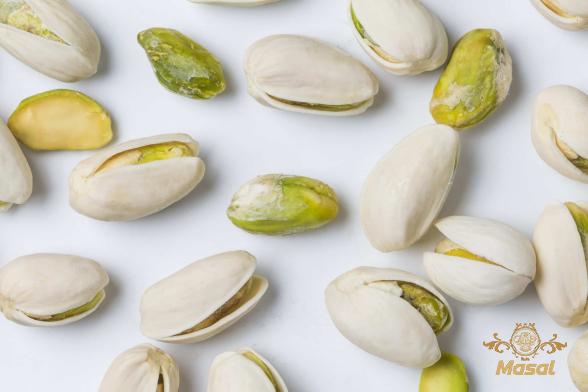 They are a versatile snack option that can be enjoyed on their own or incorporated into various recipes, making them a popular choice among health-conscious individuals. 4. Creating Value-Added Products: To cater to consumer preferences and expand their market reach, many companies in the pistachio industry have diversified their product offerings beyond traditional raw pistachio nuts. They have introduced value-added products such as flavored pistachios, pistachio butter, pistachio-based spreads, and pistachio flour for gluten-free baking. By offering these value-added products, companies can tap into different market segments and cater to varying consumer preferences. The versatility of pistachios allows for innovation in product development, providing new and exciting options for consumers. 5. Developing Sustainable Farming Practices: Sustainability and environmentally-friendly practices are gaining traction in the pistachio industry. Growers and processors are investing in sustainable farming practices, efficient irrigation systems, and responsible water management to reduce their environmental impact. Furthermore, efforts are being made to use renewable energy sources to power processing facilities and reduce greenhouse gas emissions. These sustainable practices not only benefit the environment but also contribute to the overall brand image and consumer perception of the products. 6. Export Opportunities and Global Demand: The pistachio market is not limited to domestic consumption. Export opportunities play a crucial role in driving the growth of the industry. Countries like the United States, Iran, and Turkey are key players in the global pistachio trade, providing raw pistachio nuts to meet the demand of consumers worldwide. The increasing popularity of pistachios, especially in emerging markets, offers significant growth potential for exporters. The demand for raw pistachio nuts is expected to rise further as consumers become more aware of their nutritional benefits and seek healthier snack alternatives. 7. Challenges Faced by the Pistachio Industry: Despite the positive market outlook, the pistachio industry does face certain challenges. One significant challenge is the vulnerability of pistachio orchards to climate change and unpredictable weather patterns. Pistachio trees require specific climate conditions to thrive, and any adverse weather events can impact yield and quality. Additionally, price volatility and fluctuations in the global market can present challenges for growers and processors. Competition within the industry is also fierce, requiring companies to continually innovate and differentiate themselves to maintain a competitive edge.
They are a versatile snack option that can be enjoyed on their own or incorporated into various recipes, making them a popular choice among health-conscious individuals. 4. Creating Value-Added Products: To cater to consumer preferences and expand their market reach, many companies in the pistachio industry have diversified their product offerings beyond traditional raw pistachio nuts. They have introduced value-added products such as flavored pistachios, pistachio butter, pistachio-based spreads, and pistachio flour for gluten-free baking. By offering these value-added products, companies can tap into different market segments and cater to varying consumer preferences. The versatility of pistachios allows for innovation in product development, providing new and exciting options for consumers. 5. Developing Sustainable Farming Practices: Sustainability and environmentally-friendly practices are gaining traction in the pistachio industry. Growers and processors are investing in sustainable farming practices, efficient irrigation systems, and responsible water management to reduce their environmental impact. Furthermore, efforts are being made to use renewable energy sources to power processing facilities and reduce greenhouse gas emissions. These sustainable practices not only benefit the environment but also contribute to the overall brand image and consumer perception of the products. 6. Export Opportunities and Global Demand: The pistachio market is not limited to domestic consumption. Export opportunities play a crucial role in driving the growth of the industry. Countries like the United States, Iran, and Turkey are key players in the global pistachio trade, providing raw pistachio nuts to meet the demand of consumers worldwide. The increasing popularity of pistachios, especially in emerging markets, offers significant growth potential for exporters. The demand for raw pistachio nuts is expected to rise further as consumers become more aware of their nutritional benefits and seek healthier snack alternatives. 7. Challenges Faced by the Pistachio Industry: Despite the positive market outlook, the pistachio industry does face certain challenges. One significant challenge is the vulnerability of pistachio orchards to climate change and unpredictable weather patterns. Pistachio trees require specific climate conditions to thrive, and any adverse weather events can impact yield and quality. Additionally, price volatility and fluctuations in the global market can present challenges for growers and processors. Competition within the industry is also fierce, requiring companies to continually innovate and differentiate themselves to maintain a competitive edge.
buy nut
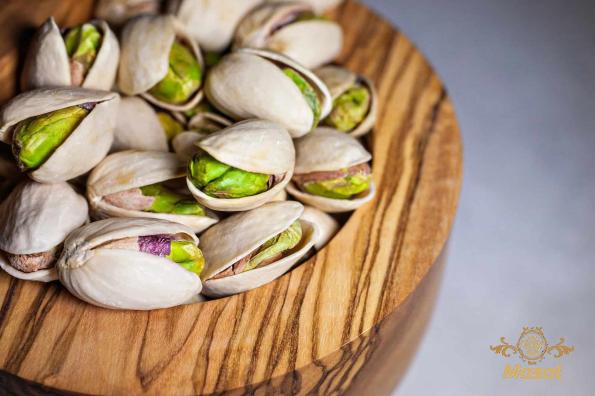 8. Health and Safety Regulations: As with any food product, the pistachio industry must comply with health and safety regulations to ensure product quality and consumer safety. Stringent food safety measures and quality control processes are implemented at every stage of the supply chain, from cultivation and harvesting to processing and packaging. Companies must adhere to industry standards to maintain product integrity and meet regulatory requirements. Certifications such as Hazard Analysis and Critical Control Points (HACCP) and Good Manufacturing Practices (GMP) are essential for the industry players to ensure the safety and quality of their products. 9. Marketing and Promotional Strategies: To stay competitive and attract consumers, companies in the pistachio industry employ various marketing and promotional strategies. Numerous advertising campaigns, social media presence, and endorsements are used to create brand awareness and highlight the nutritional benefits of pistachios. Collaborations with influential personalities, fitness experts, and nutritionists are also common in the industry to endorse pistachio products and encourage consumers to choose them as a healthy snack option. 10. Future Trends and Opportunities: The pistachio industry is expected to witness continued growth in the coming years, driven by the increasing demand for healthy and nutritious snack alternatives. As consumers continue to prioritize health and wellness, companies can capitalize on this trend by developing new product variants, expanding into international markets, and investing in sustainable farming practices. Moreover, the incorporation of pistachios into the vegan and plant-based food sectors presents significant opportunities for industry players. The versatility and unique flavor profile of pistachios make them a suitable ingredient for plant-based protein alternatives, desserts, and dairy-free products. Conclusion: Raw pistachio nuts are a sought-after snack option due to their distinct flavor, nutritional benefits, and versatility. The pistachio industry is witnessing growth and diversification as consumer demand for healthy snacks continues to rise. Key players are developing value-added products, investing in sustainable farming practices, and exploring export opportunities to cater to the global market. However, challenges such as climate change, market volatility, and competition require continuous innovation and adherence to quality standards. Through strategic marketing, promotion, and collaboration, the pistachio industry can capitalize on the growing consumer demand for nutritious and satisfying snack options. With favorable market conditions and evolving consumer preferences, the future looks promising for the global pistachio industry.
8. Health and Safety Regulations: As with any food product, the pistachio industry must comply with health and safety regulations to ensure product quality and consumer safety. Stringent food safety measures and quality control processes are implemented at every stage of the supply chain, from cultivation and harvesting to processing and packaging. Companies must adhere to industry standards to maintain product integrity and meet regulatory requirements. Certifications such as Hazard Analysis and Critical Control Points (HACCP) and Good Manufacturing Practices (GMP) are essential for the industry players to ensure the safety and quality of their products. 9. Marketing and Promotional Strategies: To stay competitive and attract consumers, companies in the pistachio industry employ various marketing and promotional strategies. Numerous advertising campaigns, social media presence, and endorsements are used to create brand awareness and highlight the nutritional benefits of pistachios. Collaborations with influential personalities, fitness experts, and nutritionists are also common in the industry to endorse pistachio products and encourage consumers to choose them as a healthy snack option. 10. Future Trends and Opportunities: The pistachio industry is expected to witness continued growth in the coming years, driven by the increasing demand for healthy and nutritious snack alternatives. As consumers continue to prioritize health and wellness, companies can capitalize on this trend by developing new product variants, expanding into international markets, and investing in sustainable farming practices. Moreover, the incorporation of pistachios into the vegan and plant-based food sectors presents significant opportunities for industry players. The versatility and unique flavor profile of pistachios make them a suitable ingredient for plant-based protein alternatives, desserts, and dairy-free products. Conclusion: Raw pistachio nuts are a sought-after snack option due to their distinct flavor, nutritional benefits, and versatility. The pistachio industry is witnessing growth and diversification as consumer demand for healthy snacks continues to rise. Key players are developing value-added products, investing in sustainable farming practices, and exploring export opportunities to cater to the global market. However, challenges such as climate change, market volatility, and competition require continuous innovation and adherence to quality standards. Through strategic marketing, promotion, and collaboration, the pistachio industry can capitalize on the growing consumer demand for nutritious and satisfying snack options. With favorable market conditions and evolving consumer preferences, the future looks promising for the global pistachio industry.

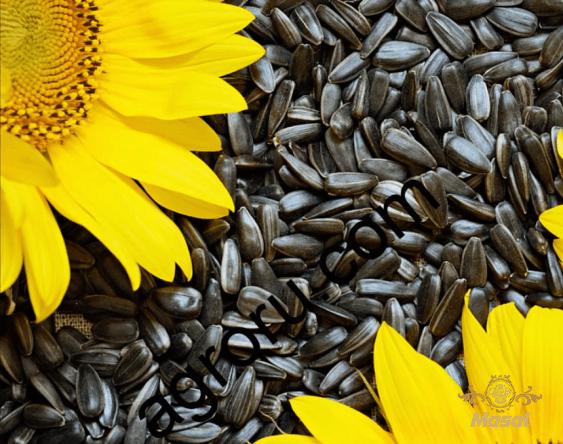
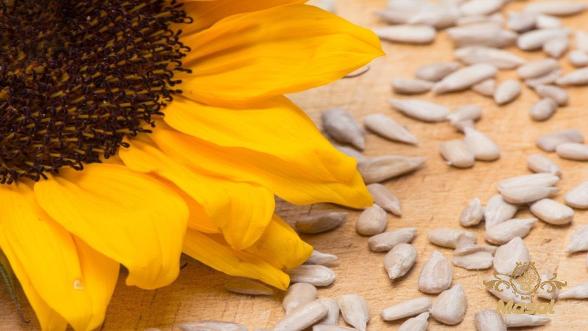
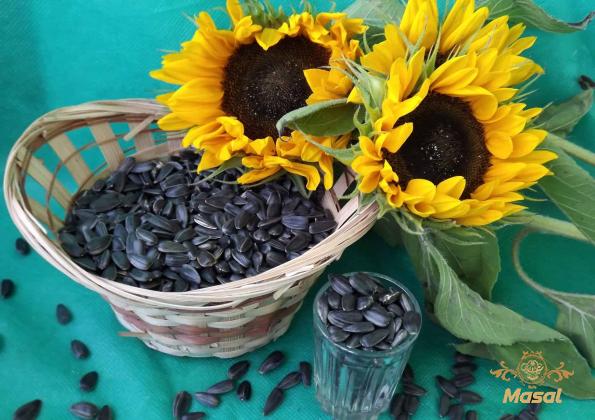


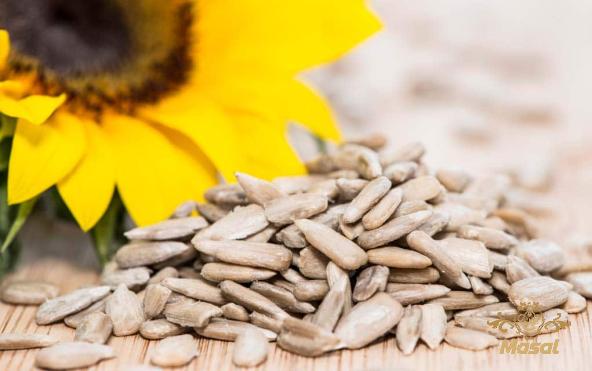
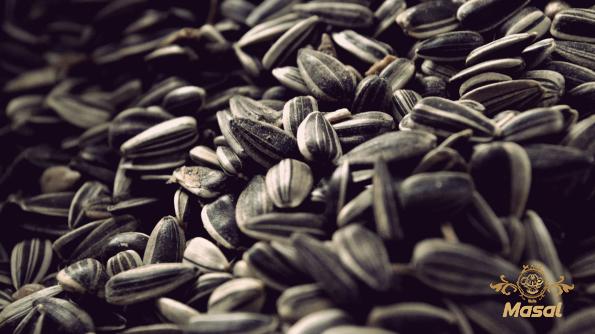

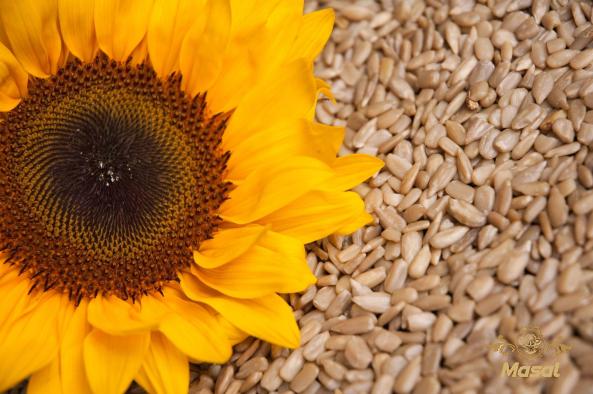
Your comment submitted.